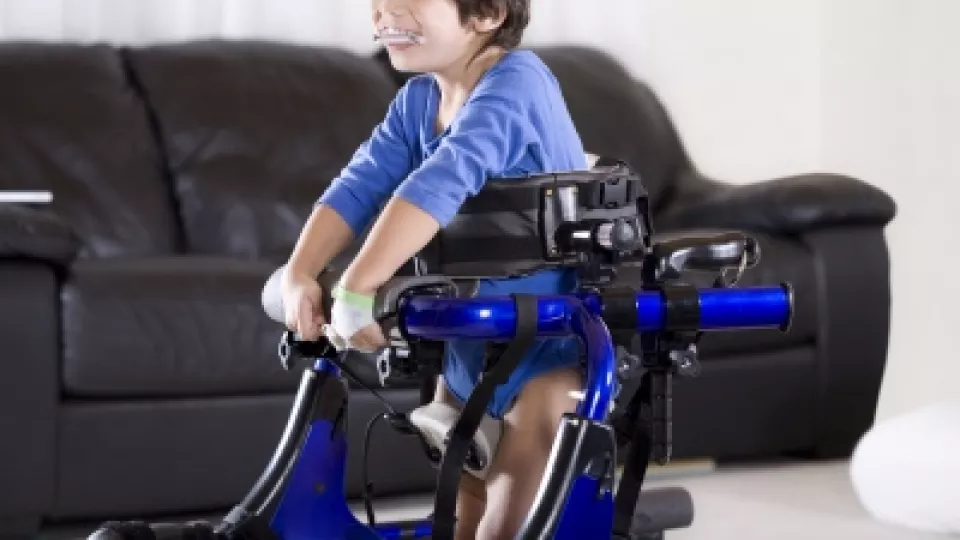
Gait Trainers
One of the most exciting milestones for parents is their child’s first steps. They will film it, post it on social media, and tell all their friends about that exciting day. So it is no surprise that as a physical therapist to children with special needs, I am often asked, “Will my child walk?” or “When will my child walk?” These are not easy questions to answer as I cannot always predict when it will happen. But what I can assure them is that we will make every effort to give their child some form of independent mobility, and luckily there are many types of equipment that will achieve this goal. Gait trainers are one of them.
What are gait trainers?
Gait trainers are assistive devices similar to walkers, but have enough support to help children who may not be able to stand or walk without assistance. This allows children to achieve independent walking so that they can explore their environment without dependence on someone else.
Different gait trainers have more or less support and can be beneficial to kids with high or low tone or various levels of disability. Many gait trainers can be modified to give less support as the child advances with his or her walking.
Why is walking so important?
“If you can't fly then run, if you can't run then walk, if you can't walk then crawl, but whatever you do you have to keep moving forward.“ I love this quote by Martin Luther King and while he meant it in the figurative sense, I take it in the more literal sense. It is so essential that we all keep moving for our health and well-being.
It’s understandable that walking is so important to parents; it’s a developmental rite of passage. Upright mobility is a dramatic developmental event and it changes the communication between the child and the parent. Walking can help children have a greater interest in exploring their environment and give them a new sense of independence.
Independent mobility and walking are also important for:
- Bowl and bladder function
- Prevention of contractures, a condition of shortening and hardening of muscles, tendons or other tissue, often leading to deformity and rigidity of joints
- Improve bone-mineral density
- Strength
- Lung function
- Psychological and cognitive development
- Improved visual awareness
Choosing a gait trainer
Choosing a gait trainer should not be taken lightly and should be done with the help of an experienced physical therapist. It is important to try multiple gait trainers before choosing the best one for your child. It is difficult to get gait trainers approved through insurance and the expectation before approval is that multiple gait trainers were trialed over several physical therapy sessions.
Once the right gait trainer is chosen, your child will have the opportunity to move and explore while getting the benefits of being active.


